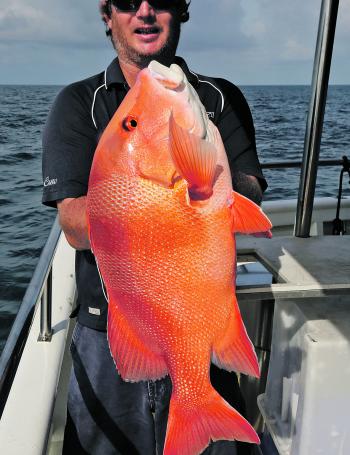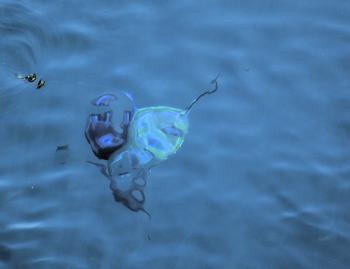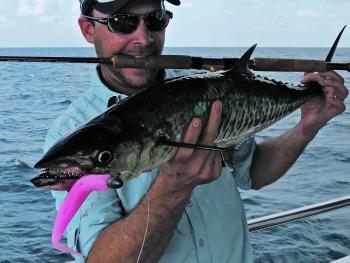By this time of year, there’s dry cracking earth in way too many Cape York river beds. Waterways are at their most stagnant for the year. Lagoons and billabongs have shrunk by more than half their wet season girth.
What does this mean for anglers? Despite the heat and the cloud and the searing humidity, and the occasional march fly, mosquito or sand fly ready to test your nerve, December is a great month for fishing. It’s a pivotal month, which often sees the monsoon commence or building heavily.
For fishers, it means short, sharp spells of activity. The early morning hours will almost always see a good bite, often right as the sun peeps over the horizon. The reef comes alive across its vast length. Be careful!
The first few hours of daylight will often be completely breezeless throughout December. The Gulf of Carpentaria devoid of ripples is a magnificent sight. Fluttering gulls can be seen from miles away, hovering over and slashing around mackerel and sailfish. Birds dart amongst schools of marauding queenfish and trevally, herding baitfish against the surface.
Come lunchtime and throughout most of the afternoon, there’ll be a lull in the fishing, except around a change of tide. Where no tidal influence exists, it’s best to just to rest up until late afternoon. A solid effort leading up to sunset and just past will reward anglers with fantastic surface lure fishing across much of the Cape.
Saratoga have now been reduced in range to those enclosed waterholes and slow draining creeks, which typify much of the Western Cape. Casting poppers or fizzers and just about any surface lure can see a dominant fish swim towards the lure splash and engulf it where it lands. Saratoga are a tricky customer to hook and even trickier to land. The more time they have in air and water, the greater risk of your lure being thrown!
Moving down the river systems, anglers should be having some good success with mangrove jack and black jew. Both these fish can also be caught around the headlands and near-shore reef areas. Right up the west coast of the Cape and across the tip, conditions are just right for black jew. Voracious predators, these fish are particularly susceptible to large soft plastics, jigs and live baits fished close to the bottom.
Mangrove jack will be busily scoffing down jelly prawns, sardines, crabs and just about anything which matches their prey size. Up many of the crystal clear creeks, mangrove jacks will usually be surrounded by others of their kind. A cautious approach can see teams of jacks darting out of structure to smash artificial offerings.
On the near-shore reefs, golden snapper, tuskfish and coral trout can be temped equally by bait, lures and soft plastics. Hopping the presentations in the bottom few metres of water will get these species feeding. It’s amazing how shallow the water can be where big specimens of each are hiding.
The Cape will generally become quite deserted this time of year. For those that are left behind, the rewards can be demanding, but so worthwhile.
Reads: 1221
A beautiful red landed on the Elizabeth EII.

A sailfish nearing the surface in clear conditions.

Small Spanish mackerel caught flicking plastics over a shoal.

This red emperor got hammered by the taxman.




